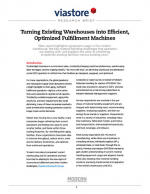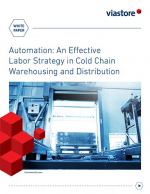Why Wave Picking Might Not Be the Best for Your Distribution Center
The end goal with waveless is a more productive DC - one that is able to pump out more orders and accommodate tighter delivery requests and transition from waves to waveless to see steadier utilization rates.
Within warehouses and distribution centers (DCs) one buzzword that has been around for a few years is “waveless” picking.
While waveless operations have been adopted by a few U.S. companies, and are much more commonplace in Europe, the characteristics of waveless picking, its benefits, and its supporting elements, are far from well understood.
But if your DC is beset by bottlenecks, poorly coordinated islands of automation, and is struggling with the tighter order priorities common to multichannel fulfillment, then it may be time to learn more about waveless picking and what it can do for your bottom line.
The best way to understand waveless is to consider the evolution of wave picking.
A ‘wave” is a grouping or batch of work released for picking based on common parameters.
A wave may be organized around common stock keeping units (SKUs), commonality in the locations SKUs are stored within, shipping deadlines, common carriers, and common sorting or kitting processes the batch of work needs to flow through. Grouping work into waves caught on because it tends to be more efficient than strict order line picking in which individual orders entering the system are picked by a single picker.
With waves, picker travel time is reduced, leading to better efficiency than picking orders one at a time.
There are problems with wave picking, however. Waves generally are processed in a serial fashion, meaning workers and equipment must wait to finish one wave before they move on to the next. While it might be possible to process some waves simultaneously, the availability of sortation, other equipment or processing areas might limit the ability to process more than one wave concurrently.
This batch nature of wave picking leads to other problems, including:
- There is usually no ability to accommodate high priority picks and tasks once a wave is established and set in motion without manual expediting.
- During the start and middle of a wave, pickers, packers, and islands of automation usually stay busy, but during the tail end of a wave, one process often finishes before the others, leading to idle time and starts and stops at points in the workflow.
- While more efficient than strict order picking, the batch nature of waves inherently limits the picks, tasks and processes that potentially could be worked on.
- Adding additional “similar” work to the wave is not possible or is a very manual process.
Why Waveless?
In a word, the key benefit of waveless is flexibility. Because work is not batched together in a wave, any order, item, or task entering the system is available for picking or other processing. This helps both throughput and efficiency.
What’s Related




Favorites





